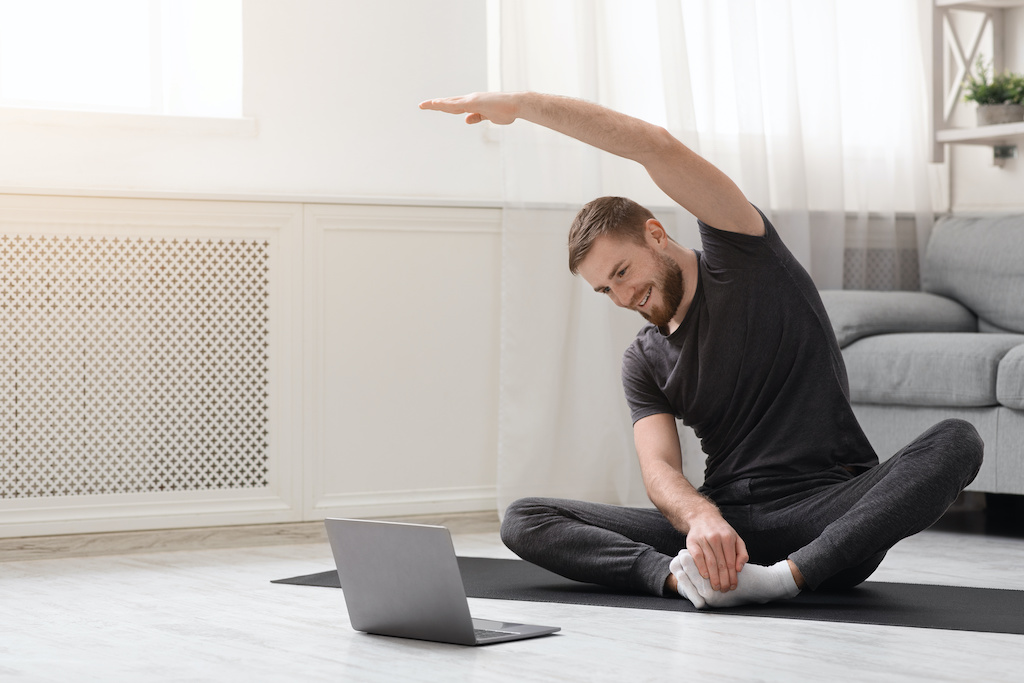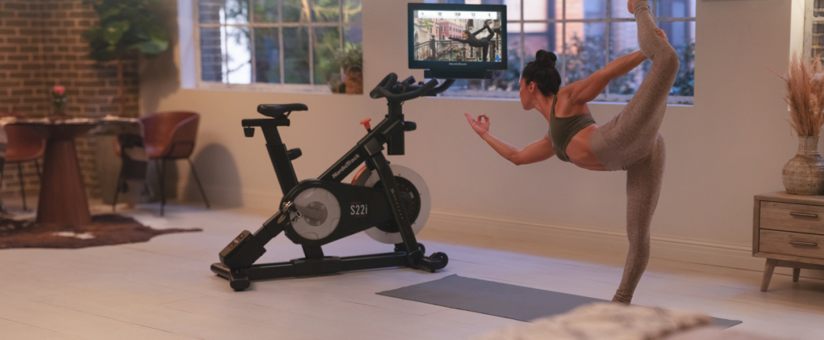Yoga is a very gentle exercise discipline ideal for relaxation. Would you like to know how to start doing yoga by yourself at home? With very little equipment and a few simple ideas for postures, you can easily start doing your first yoga sessions at home. By opting to use a virtual coaching app, you’ll never run out of new ideas to try out at home.
Why should you do yoga at home?

Doing yoga can bring many benefits, both physically and emotionally. This traditional Indian discipline is a very gentle exercise with beneficial effects. It helps you to:
- Release tension, thanks to stretching and learning to work on your breathing.
- Gain flexibility and tone.
- Reduce stress.
- Practise maintaining concentration and focus.
- Develop the breath.
- Various other benefits.
Yoga is accessible to beginners as well as to experienced athletes. Sessions can easily be carried out at home, allowing you to relax without the constraints of timetables, trips to a gym or group sessions.
Preparing to practise yoga at home

Yoga can be practiced by everyone, from young children to pregnant women (or after pregnancy), through to seniors. This discipline requires very little equipment and after learning some basic postures, you will quickly be able to organise your first sessions at home.
Preparing your equipment: Get well-equipped to practice yoga
Basic yoga equipment is very easy to obtain:
- A thin yoga mat, about 5 mm thick, ideally non-slip.
- A comfortable outfit: Leggings, a close-fitting vest or T-shirt.
- No need for shoes as yoga is practiced barefoot.
- You can opt to add some additional equipment to your home yoga space. Some items are needed for specific postures, such as: Cushions, bricks, blankets, a chair or straps.
To be well prepared, set up a yoga space at home. Choose a quiet place with enough space to stretch, and decorate it with your choice of:
- Candles
- Incense
- Yoga books
- Green plants
- A Hi-Fi system to listen to relaxing music during your sessions.
- Elements conducive to meditation: Mandalas, positive quotes, etc.
- Any other items that help you to relax.
Preparing for your first yoga session
To prepare for your first yoga session, follow these steps:
- Plan some quiet time: A yoga session usually lasts between 10 minutes and 1 hour.
- Unplug your electronic devices so that nothing disturbs your Zen moment of the day.
- Prepare your equipment and keep a glass of water nearby.
- Prepare your special yoga playlist, unless you prefer to relax in silence.
How do you prepare for your home yoga session?

To learn more about the practice of yoga, you can read books and watch DVDs or do some research on the Internet. You could also start by taking a few trial classes with a yoga teacher or taking online classes. Here are some tips and first postures you can try out to put together your first home yoga session
Tips for starting yoga at home
To start doing yoga you need the best conditions:
- Try postures suited to your level.
- Start by learning some floor postures before trying vertical positions.
- Finish each yoga session with 5 minutes in the Savasana position: Lie on your back, motionless, and breathe calmly to soothe your mind.
Some ideal yoga poses for beginners
These floor positions are ideal to start doing yoga by yourself at home:
- Balasana or child’s pose:
- Kneel down on your yoga mat with your buttocks on your heels and knees slightly apart to facilitate good breathing.
- Lay your forehead on the ground and place your arms alongside your body.
- Stay in this position for several deep breaths.
- Sukhanasana, a pose that teaches you how to sit in yoga: Sit on a brick or a folded blanket, legs crossed, feet under the knees. The knees should not be higher than the hips. Put your hands on your legs.
- Bhujangâsana or cobra pose:
- Lie face down on your yoga mat.
- Lay your hands flat on the floor at shoulder level.
- While breathing deeply, tilt the head backwards and raise the chest.
- Don’t push on your arms; they are only placed on either side of your body to help you keep your balance.
Enjoy many home yoga sessions with interactive and personalised iFit® training sessions. The iFit® app is available on smartphones and is compatible with all NordicTrack equipment: By subscribing, you benefit from unlimited access to the iFit® library, including new yoga sessions with virtual coaching provided by professionals from all over the world.
Check out our Health & Fitness page for more advice.
